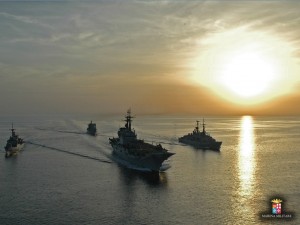
All you can say except that the so-called” Marine Law “(though, more correctly, the measure in question should be defined” Naval Program “) approved by Parliament and initiated by the Navy has generated considerable interest.
Its scope in terms of quantity and quality of new units, the financial commitment expected and the important involvement of national industry make it this program something unique not only for our country but also in the same international scene.
Here, then, that every opportunity to deepen the various aspects that can not be said to be welcomed; especially given the fact that although they’re talking about a lot and already for some time, often we get the feeling that actually has not been said enough.
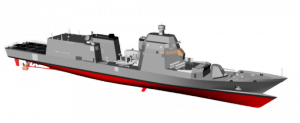 The pun may not be the most original; But objectively, it must be noted as different aspects (especially those more technical, not to mention the operational requirements of certain platforms) remain still wrapped in a mystery, helping to keep a veil of opacity that, at this point, appears objectively incomprehensible .
The pun may not be the most original; But objectively, it must be noted as different aspects (especially those more technical, not to mention the operational requirements of certain platforms) remain still wrapped in a mystery, helping to keep a veil of opacity that, at this point, appears objectively incomprehensible .
It was said of occasions useful to study issues related to this program; Well, it turned out to be particularly interesting one organized by the Confederation of La Spezia and that is a panel discussion held on 24 July at the conference facilities of Porto Lotti on the subject: “Naval Law: as an opportunity for the country and for the industries of the territory” .
What is the “Law Naval”
Before proceeding further, however, a few brief words about the, albeit short, history of this program; the first important step you have at the end of 2013 when the Stability Law in 2014 is placed the measure authorizing grants twenty years, timetabled over the years, to be entered in the budget of the Ministry of Economic Development: “In order to ensure the maintenance of adequate capacity in maritime sector to protect the interests of national defense and as part of a common European policy, consolidating the strategic high-tech shipbuilding industry. ” The total amount allocated is equal to 5.8 billion euro and which form of financing is expected allocates loans.
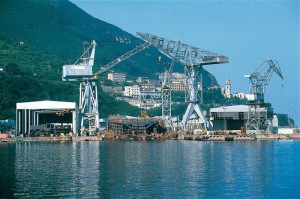 > In the space of a few months, however, during one of the usual “snips” funds for the Armed Forces, there is precisely a cut in funds for what now is known as “Marine Law”; cutting that involves a descent of the amount available to the current level of approximately EUR 5.4 billion.
> In the space of a few months, however, during one of the usual “snips” funds for the Armed Forces, there is precisely a cut in funds for what now is known as “Marine Law”; cutting that involves a descent of the amount available to the current level of approximately EUR 5.4 billion.
Meanwhile, it also specifies its exact contours, with a more precise definition of the units to be built and that is 6 (plus 4 optional) Multipurpose Offshore Patrol (PPA), a multi-role amphibious units LHD (Landing Helicopter Dock), a unit of logistical support or LSS (Logistic Support Ship) and finally 2/2 speed for the Raiders.
A second important event takes place at the end of last year, with the parliamentary passage of the Acts of the Government 116 (Multiannual program of A / R n. 01/2014 SMD on the naval program for the protection capacity maritime defense) and 128 (Use of multi-year contributions). A passage in which he returns to remember, and to emphasize, as the Navy is destined to lose less than 51 vessels over the next decade, much of which to be replaced relatively quickly while others may be replaced at a later time pivoting on one (for now called) as “Naval Program”.
 added that the regular budgets of the defense are not fully capable of ensuring the resources necessary to ensure an adequate pace and constructive here is that the future framework can be said to be defined, with a Navy itself reduced to a minimum (and with conspicuous holes in terms of capacity for the complete disappearance of some specific types of platforms).
added that the regular budgets of the defense are not fully capable of ensuring the resources necessary to ensure an adequate pace and constructive here is that the future framework can be said to be defined, with a Navy itself reduced to a minimum (and with conspicuous holes in terms of capacity for the complete disappearance of some specific types of platforms).
But besides its more properly related to the needs of the Armed Forces, the importance of the “Law naval” is also declined in terms of its effects on industry and employment if one considers that the percentage of “Made in Italy” on the unit provided will be nothing short high.
The parliamentary scrutiny ends with the approval of both acts by the Defence Committees of the Senate Room and although it adds to the conditions, especially with reference at the time 128 and the important change occurred with the Stability Law 2015; in fact it is offered to omit the mortgage in favor of direct funding for a passage of no small importance because, in this way, the amount allocated was fully available as no longer weighed down by interest. From this point of view it must be noted, however that has not been made sufficiently clear about the impact that this news will have, in particular, on the number of units to be built.
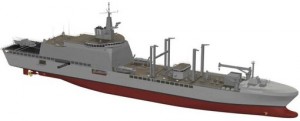 spend a few months here and to materialize the first contracts and, therefore, the entry in a more “concrete”.
spend a few months here and to materialize the first contracts and, therefore, the entry in a more “concrete”.
’5 last May when comes the announcement by OCCAR (Organisation Conjointe de Coopération en Matière d’Armament) integration in the same organization programs in the PPA (6 units, plus 4 optional) and LSS (1 unit); an integration that, of course, comes after the signing of the relevant contracts with the Italian authorities, for a total of approximately 2.3 billion euro in favor of the temporary consortium, RTI, consisting ago Fincantieri and Finmeccanica. Significant, in this regard, the decision to entrust the management of this part of the program in this European body, as well as the inclusion of the provision of support to the life cycle in the first 10 years, including ILS (Integrated Logistic Support) and ISS (In Service Support).
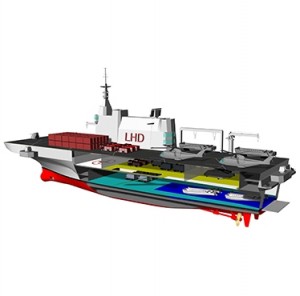
Note that the documentation provided to the Defence Committees of the cost realization total of 6 and a PPA LSS had been indicated in 2.945 billion euro (2.62 billion for the PPA and 325 million for the LSS).
In the absence of official information then appears however logical hypothesize that these platforms are built at the Shipyard Military integrated, including establishments of Riva Trigoso and Muggiano.
The timing currently expects delivery of the first PPA (in light version) in 2021, with the completion of the 6 units now planned in 2025 (and the delivery of the first PPP in Full version in 2023); however, it remains to be clarified definitively the story of the funding and, consequently, the ability to exercise an option for additional units, as well as the exact division between Light and Full. As for the LSS, it is scheduled for delivery in 2019.
New, and so far last, passing just a month ago with the announcement of the signing of the contract with the Ministry of Defence (worth 1 , 1 billion Euros approximately) for the supply of a LHD that will be realized, of course, by the same RTI; under the contract is also provided, even in this case, the supply of ILS and an ISS for a period of 10 years.
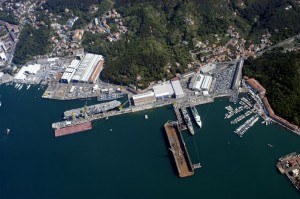 Again with reference to the documents of Parliament, he also points out that the cost of construction of the LHD was indicated in 844 million euro.
Again with reference to the documents of Parliament, he also points out that the cost of construction of the LHD was indicated in 844 million euro.
To highlight the (more than likely) choice of Fincantieri plant of Castellammare as the site for the construction of this unit amphibious, with the final stages of testing and delivery to be carried out anyway (and probably) at the site of Muggiano; delivery of the LHD is finally expected in 2022.
It is hoped that the signing of these contracts such manages to increase the amount and quality of information on these new platforms because, except for the long disquisitions on dual capacity, some important points remain to be clarified; both compared to the LHD is, indeed especially, compared to PPA (this also because of quite a few differences between the so-called Light and Full versions).
The actions
Exhausted this sort of short chronology of major events, it is time to review the most significant passages of a round table crowded and shared.
 In his introductory remarks, the President of Confindustria La Spezia Dott. Giorgio Bucchion has emphasized, as part of a comprehensive analysis, the importance of manufacturing industry for our country, reminding at the same time as the latter has suffered in these years of crisis.
In his introductory remarks, the President of Confindustria La Spezia Dott. Giorgio Bucchion has emphasized, as part of a comprehensive analysis, the importance of manufacturing industry for our country, reminding at the same time as the latter has suffered in these years of crisis.
Here is the “Marine Law” becomes an important opportunity for Italy in general but also, and especially, to the territory of Liguria. In this context has been praised the historic alliance with the Navy and the great importance of two large industrial groups such as Fincantieri and Finmeccanica, massively present in the La Spezia.
Concepts substantially reaffirmed in greeting the mayor of La Spezia, Dott. Massimo Federici, where he reiterated that this measure really represents a unique opportunity to be seized in order to enhance and develop the industrial district Ligurian engaged in the sector, also in view of the envisaged creation of a technological center of Defense that puts to pool the experience of the industry, and the University of the Armed Forces.
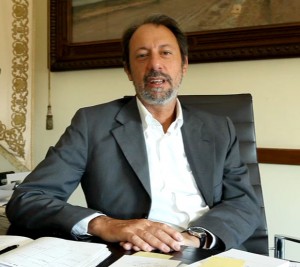 Special, but not least, the heartfelt appeal for this same “Naval Law” will be able to exploit fully the potential of the district of Liguria, not only as a mere “executor” of the work but also by becoming a sort of “thinking head” in the various activities that are taking place.
Special, but not least, the heartfelt appeal for this same “Naval Law” will be able to exploit fully the potential of the district of Liguria, not only as a mere “executor” of the work but also by becoming a sort of “thinking head” in the various activities that are taking place.
One of the leitmotif of the actions taken by various MPs present, in particular by the moderator Sen. Massimo Caleo and his colleague Vito Vattuone , was the memory of encountering difficulties in 2013 when, in the middle of the debate on the Stability Law 2014, attempts (also last minute) to scupper the measure in favor of the Navy were certainly not insignificant.
The meaning of this memory is that, ultimately, the measure is not approved It can hardly be called an act of “business as usual”; especially in light of the frequent controversy concerning the issue of military spending.
A theme that, especially Senator Vito Vattuone (Member of the Defence Committee Senate) wanted to stigmatize, emphasizing on the one hand the absolute appropriateness of such a provision in favor of the Navy to meet the needs of our country compared to a Mediterranean Sea that extraordinary importance for our security and our economy.
 Moreover, it will save large industrial and technological capabilities (where, the theme of the preservation of a certain technological advantage of Our defense industry has been one of the strands of the whole round table), while ensuring a fundamental autonomy in terms of production capacity both in military terms and giving the Marina (and the same armed forces as a whole) more capacity operational.
Moreover, it will save large industrial and technological capabilities (where, the theme of the preservation of a certain technological advantage of Our defense industry has been one of the strands of the whole round table), while ensuring a fundamental autonomy in terms of production capacity both in military terms and giving the Marina (and the same armed forces as a whole) more capacity operational.
Concepts substantially made right by the President of the Ligurian District of Marine Technology (and former Under Secretary of Defense) L orenzo Forcieri which is returned reiterate the importance of the “system” between all actors in the area, from businesses to finish college; stressing in this regard the role of the same district and that is a reality which already operate in synergy these same actors and the Navy.
 > In this sense, it seemed useful to recall two more aspects; the need to make this “Naval Law” on the one hand a source of stimulus in research (also according to the already mentioned the need to maintain a technological advantage) and, secondly, the opportunity to involve the world of SMEs (Small Medium Enterprises).
> In this sense, it seemed useful to recall two more aspects; the need to make this “Naval Law” on the one hand a source of stimulus in research (also according to the already mentioned the need to maintain a technological advantage) and, secondly, the opportunity to involve the world of SMEs (Small Medium Enterprises).
then Mindful of his past in politics, the same Forcieri, referring back to what was said by Senator Vattuone, stressed the need to feed the debate on a (still poor ) culture of defense and security; need made even stronger by the current historical moment, so full of crisis and uncertainty.
A note somewhat of hope came from the President of the Liguria John Tot which reported his personal experience, made of industrial employment crises (large and small) in the region led by himself; Well, in a landscape so difficult, an investment of this magnitude becomes really important for Liguria but, ultimately, throughout Italy.
 Furthermore, given its importance, did not fail to express the hope that it will become an occasion to think about a new model of development, including those originating from the ability to develop dual-use technologies; with them so useful to broaden the base of products, also in export function.
Furthermore, given its importance, did not fail to express the hope that it will become an occasion to think about a new model of development, including those originating from the ability to develop dual-use technologies; with them so useful to broaden the base of products, also in export function.
investment theme that was taken up well by Sen. Massimo Mucchetti, even in a somewhat longer perspective “controversy”; to the extent that he wanted to emphasize that, as part of public spending is often under attack, just the chapter on investment becomes part somehow positive.
Moreover, in an era characterized by the scarcity of resources, it would be very appropriate to ask whether it makes more sense to concentrate them on the chapter of consumption or on that of the same investments. A question in some way rhetorical seen that the latter are able to set in motion; from the field of research and technological innovation to get the results in terms of turnover and employment.
The industry perspective …
topics, the latter, which were the central part of action of ‘ Ambassador Vincent Petron , Chairman of Fincantieri, and the Dr. John Soccodato , responsible for the strategies of the Finmeccanica group.
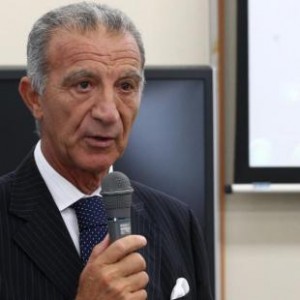 The first “pitted” a series of facts and figures to help you understand the impact that the “Law Naval” will in Liguria; from here until 2018, it is expected to increase to 3,000 employees (direct and indirect), 1.5 million hours working at full power and full use of the Integrated Military Shipyard.
The first “pitted” a series of facts and figures to help you understand the impact that the “Law Naval” will in Liguria; from here until 2018, it is expected to increase to 3,000 employees (direct and indirect), 1.5 million hours working at full power and full use of the Integrated Military Shipyard.
What’s more, the effects Naval Law will be felt in terms of volume of purchases that will be made in the area and, even more important element, all of these effects will be felt at least until 2025, if not beyond. One of the most important steps of the intervention Amb. Petrone was, however, the claim of the centrality of the military as part of the group Fincantieri, the volume of sales and the degree of technological innovation since it guaranteed, remain a source of strength for Fincantieri itself.
Inspired from data provided by Ambassador. Petrone, and in particular that relating to the industry multiplier of Defense, which determines how each euro invested in the sector produces 3.9 of the final value, Dr. Soccodato revealed the nature of the decade “Marine Law”; a time frame sufficiently wide to allow the industry in general, and Finmeccanica in particular, to plan optimally planned investments.
This gives more certainty to businesses and helps to strengthen the already close co-existing between industry and that of the Armed Forces.
 And to give you an idea of what will be able to make “Marine Law”, did not miss a list of new products that companies of the Finmeccanica group will develop: respect Selex ES talking about the new DBR AESA (Active Electronically Scanned Array, Dual Band Radar) in 4 faces still and double band (X / C), the equally new L-band radar antenna rotating, for OTO Melara (in addition to the continuation of programs guided munitions by 76 and 127 mm), will be developed the 76/62 “sovraponte”, the new launch system for countermeasures against missiles and torpedoes and new towers remotised 25mm while WASS will develop new curtains linear for the discovery of underwater threats.
And to give you an idea of what will be able to make “Marine Law”, did not miss a list of new products that companies of the Finmeccanica group will develop: respect Selex ES talking about the new DBR AESA (Active Electronically Scanned Array, Dual Band Radar) in 4 faces still and double band (X / C), the equally new L-band radar antenna rotating, for OTO Melara (in addition to the continuation of programs guided munitions by 76 and 127 mm), will be developed the 76/62 “sovraponte”, the new launch system for countermeasures against missiles and torpedoes and new towers remotised 25mm while WASS will develop new curtains linear for the discovery of underwater threats.
On the sidelines of the round table, and as a result of additional funding, it is also learned that MBDA will have additional funds to implement the development work on the version ER (Extended Range) of its anti-ship missile Mars.
Both the representatives of ‘ industry have also wanted to emphasize the one hand a renewed commitment to make it even stronger synergies between Fincantieri and Finmeccanica and, second, a similar commitment to work “on budget” and “on time” with respect to the costs and timetable established buyer; and also in consideration of the fact that a successful product (under every point of view) may have better chances also in the export market.
… and one of the Navy
Very expected, of course it was the intervention of the Chief of Staff of the Navy, Admiral Giuseppe De Giorgi, however, among the first to speak, which was also bestowed applause for his role in promoting first and then approval of the “Law Naval”.
 Not many novelties and, given the forum / context, there has been essentially limited to outlining the basic steps of what was done and what you will do.
Not many novelties and, given the forum / context, there has been essentially limited to outlining the basic steps of what was done and what you will do.
After he also recalled the difficulties in seeing the approval by Parliament of such a measure, the CSM has taken steps to recap the numbers involved: 6/7 PPA, 1 LHD, LSS 1 and 2 UNPAV (Naval Units Versatile Ultra High Speed). In fact, just with this step we run out of news.
On the one hand it is confirmed that the decision taken in the 2015 Stability Law to turn to mortgage financing direct the allocated sum, makes available additional funds; on the other, it should be noted the “baptism” of 2/2 minor official who, however, is expected to go to the contract by the end of the year.
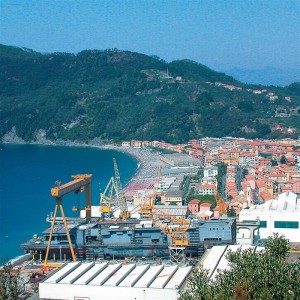 As for the resources actually, Adm. De Giorgi did not want to tip the balance too much; in practice, the seventh PPA is not given again for sure and, objectively, it seems quite surprising.
As for the resources actually, Adm. De Giorgi did not want to tip the balance too much; in practice, the seventh PPA is not given again for sure and, objectively, it seems quite surprising.
Considering that, to date, have been awarded contracts amounting to EUR 4.6 billion approximately, compared 5.4 allocated to it are still available 0.8; Now, bearing in mind that the cost of construction planned for 2 UNPAV (data contained in the Act of the Government defining the use of multi-year contributions) it is indicated in 40 million euro, margins to build the seventh unit would seem to be all right .
Indeed, lowering the level of claims and focusing on the amount (of the large number of units to be divested in the coming years) you could even suggest the construction of two platforms in the Light version.
The same De Giorgi went on to recall once again that those are the characteristic features of the “Naval Law”; from a technical point of view, the high attention to the “dual use”, the environment (with direct reference to the use of biofuel and / or gas as fuels) and high modularity (liable to turn, among other things, in a high operational availability).
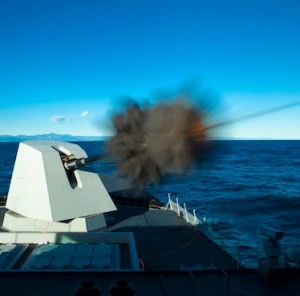 From the economic, they were remarkability the benefits in terms of employment of the production capacities of the companies involved, the maintenance of high levels of employment (with, at the same time, failure to use unemployment benefits), the tax return for the state (indicated in 2.5 billion euro) , the maintenance of adequate levels of technology in important sectors (shipbuilding, defense electronics, weapons systems); with a figure that, in some ways stands out over others: 90% of the planned work will remain in our country.
From the economic, they were remarkability the benefits in terms of employment of the production capacities of the companies involved, the maintenance of high levels of employment (with, at the same time, failure to use unemployment benefits), the tax return for the state (indicated in 2.5 billion euro) , the maintenance of adequate levels of technology in important sectors (shipbuilding, defense electronics, weapons systems); with a figure that, in some ways stands out over others: 90% of the planned work will remain in our country.
As for the characteristics of the various platforms, there is nothing particularly new as we report a strong focus in respect of PPA. The project on the latter platform is proving so that most interest, so that the same Adm. De Giorgi has amply shown (with the help of slide) the main features; by the apparatus motor that can operate in 3 different modes (on electric motors, on diesel and the gas turbine inserted), to more than adequate aeronautical equipment until the wide availability of extra spaces.
From what this center-ship and can accommodate up to 8 containers and / or RHIB and / or small landing craft (served by a crane from 20 tons to 14 meters and 2 “davit” 10 tons), that located under the flight deck that can accommodate up to 5 containers and / or RHIB and which served as a bridge crane of 10 tons besides a delivery system aft of the same rigid hull boats.
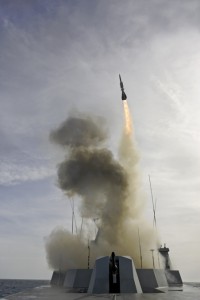 Much attention also with regard to the new configuration of the dashboard which, through the use of augmented reality systems, allow only two crewmen to govern many functions the ship, thus recalling to mind the image of a real aircraft cockpit.
Much attention also with regard to the new configuration of the dashboard which, through the use of augmented reality systems, allow only two crewmen to govern many functions the ship, thus recalling to mind the image of a real aircraft cockpit.
The slides presented (apparently related to the Full version) have also provided a clearer picture of the allocation system of these platforms; differs therefore the aforementioned radar 4 faces fixed Dual Band-level sensors, a major series of next-generation communication systems and, in terms of weapons systems, the different pieces of artillery (a piece from 127 / 64 mm, the by now well-known 76/62 “sovraponte”, the 2 machine guns 25 mm) as well as several missile systems (8 container-launchers for anti-ship Theseus and cell vertical launch system for the SAAM ESD).
All this confirms the fact that, in spite of an official name (much) in the name of “political correctness”, the platforms that are going to build will (especially for Full) overall characteristics very thorough; Typical units such as frigates.
Of course, the question is not just semantics but, more generally, concerns some fundamental aspects of the so called “Law Naval”. Because if the needs of the Navy are real / unquestionable and if, therefore, the measure approved by Parliament could be defined as a duty / postponed, nevertheless some of his steps have not appeared equally clear.
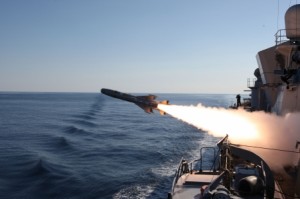 On a question instead there will be no doubt; when the construction program is completed, our Navy will surely equipped with very modern platforms that will support other anyway anything but dated. Of course, some doubts about the sustainability of such a set of units (compared to budgets of Defense Italian) remains; as well as, having committed so many resources on a relatively small number of units, the danger of some “hole” in terms of capacity.
On a question instead there will be no doubt; when the construction program is completed, our Navy will surely equipped with very modern platforms that will support other anyway anything but dated. Of course, some doubts about the sustainability of such a set of units (compared to budgets of Defense Italian) remains; as well as, having committed so many resources on a relatively small number of units, the danger of some “hole” in terms of capacity.
But, of course, predicting the future is by no means a ‘activities simple and, therefore, for the time being we have to follow the evolution of this “Law Navale”, pointing to the objective of making it really a growth opportunity for the Navy itself, for the Armed Forces in their complex and industry of our country.
Photo: Ansa. Navy, Confinndustria, MBDA, Oto Melara, Fincantieri, Finmeccanica
No comments:
Post a Comment